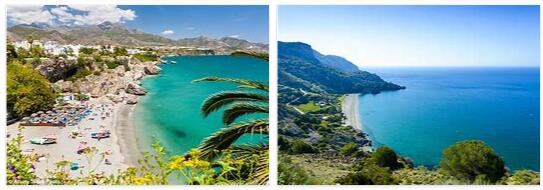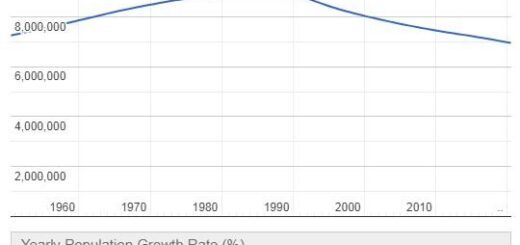Traveling in Spain
Airplane: Iberia and its subsidiary Iberia Regional-Air Nostrum have a well-developed network of domestic flights throughout Spain. The strongest competitors in this sector are Spanair, Air Europa and Vueling. The most important hubs of domestic Spanish air traffic are Madrid and Barcelona.
Iberia, Spanair and Air Europa have flights from Santa Cruz de Tenerife, Las Palmas de Gran Canaria, Lanzarote and Fuerteventura to Madrid, Barcelona and other destinations on mainland Spain.
Ship: Ferries and speedboats connect mainland Spain with the Balearic Islands and Spain’s North African enclaves Ceutaand Melilla. The main national ferry company is Acciona Trasmediterránea. In addition to car ferries, it also operates passenger ferries and speedboats. Sleeping seats and cabins are available to passengers on the ferries to the Balearic Islands.
Rail: RENFE is Spain’s national rail company and operates most of the country’s train services. There is a luggage service (Consigna) at all main train stations, which is usually open from 6 a.m. to midnight.
There are several types of trains. A local rail network (Cercanías) is available for short distances and for large cities such as Madrid, Barcelona, Bilbao, Málaga and Valencia. In long-distance traffic (Largo recorrido or Grandes Lineas), on the other hand, numerous train variants are used, from the slow regional train to the high-speed AVE train. AVE trains, for example, connect Madrid with Seville and Tarragona with Barcelona. Intercity trains, the Talgo, Talgo 200, Alaris, Altaria and Arco also run on Spain’s rails. They offer travelers a quick and comfortable rail service across the country.
All long-distance trains are equipped with first (Preferente) and second (Turista) class areas. A comfortable, albeit expensive, way of traveling by train is to use the so-called Trenhotel trains. These offer sleeping possibilities in appropriate seats, in simple single or double cabins or in luxury cabins. The trains operate on the routes Madrid-La Coruña, Barcelona-Córdoba-Seville, Barcelona-Madrid-Lisbon and Barcelona-Málaga.
Fares vary greatly, depending on the train category and in some cases also on the travel time. Children between the ages of four and twelve receive a 40 percent discount. Children under the age of four travel for free. When buying a return ticket, there is usually a 20 percent discount on the return journey. People up to the age of 25 receive a discount of 25 percent on the fare if they are in possession of the appropriate train ticket.
A reservation is recommended for long-distance trips. Tickets and reservation options are available at the train stations, in the offices of the state railway, in travel agencies or on the Internet.
Car / rental car: large international rental car agencies have numerous branches in Spain. These include Avis, Budget, Europcar and Hertz, among others. Pepecar specializes in renting small vehicles at relatively low prices. The company has offices in Barcelona, Ibiza, Madrid, Palma de Mallorca, Seville, Valencia and a number of other cities.
If you want to rent a car in Spain, you need a driver’s license and must be 21 years of age or older. The larger car rental companies often require a credit card. Smaller companies, especially in the Balearic Islands, sometimes forego this condition.
Bus: a large number of companies offer bus connections, from small local routes between individual villages to fast intercity connections. In Spain, especially on long journeys, it is often cheaper to travel by bus than by train. Some travelers under the age of 26 receive discounts. The largest and most important bus companies in Spain include ALSA, Alsina Graells, AutoRes, Continental-Auto, La Sepulvedana and Socibus & Secorbus.
Most buses that connect villages and smaller towns have schedules and services tailored to the needs of locals, not tourists. So while there are numerous connections on weekdays, they are rather rare on weekends. In most major cities, buses leave from a bus station (Estación de Autobuses). In smaller towns there are stops on streets or in squares.
For short trips, there are often no tickets in advance. However, when traveling long-haul, travelers can usually book in advance.
Local transport: larger cities and provincial capitals in Spain have a reasonable bus network. In larger cities, a night bus service serves a limited number of lines. Madrid has the largest metro network in the country, followed by Barcelona. There are smaller metro systems in Valencia and Bilbao. Seville’s is under construction.
Tickets are available on the buses or in tobacco shops and in underground stations. There are single tickets or the cheaper combined tickets of ten, which are then valid for both buses and subways.
Trams were removed from the streets of Spanish cities a few years ago. In the meantime, however, some are back in use. There are also a few new tram lines in Barcelona, as well as the Tramvia Blau tourist line. Valencia also has trams that take travelers straight to the beach, for example.
Bicycle: Spanish cities are not particularly attractive for cyclists. Barcelona is an exception. There are cycle paths and numerous rental stations along the main roads. There are numerous opportunities for mountain biking and long-distance tours in the Pyrenees and along the coast.
All regional trains and many local trains offer space to take bicycles with you. On the other hand, there are restrictions on long-distance trains. However, many buses allow you to take them along.
With the exception of Barcelona and popular tourist areas such as Andalusia, there are few options for renting bicycles in Spain. The costs vary considerably.



